What is Mold?
Mold is caused by a high level of moisture and humidity in a home. Moisture or dampness is usually caused by a water intrusion, this could be from a leaking pipe or rain water. The water will spread to other items in the home or property causing the varying materials to soak up the moisture. Once dampness sets into the materials it becomes a breeding ground for bacteria and fungi to grow. In some cases, the damp area may not be visible to the naked eye. The water could be hiding behind walls and affecting the insulation or structural material of the home. This creates a big issue when mold or water begins to show through the walls. If you already are seeing mold growth coming through a wall, you have a bigger mold problem within the wall. The moisture contained in that building may have effects on the occupants or workers. Mold found indoors causes respiratory strains, worsening asthma, allergic reactions, and several other issues to a person’s health. Health conditions can be worsened depending on the mold introduced to your home. Different mold species usually grow when moisture levels and humidity levels are just right. Each mold species has a different humidity level that they must sustain to be able to thrive.
When Do I Call A Professional?
Mold is naturally circulating in the air and varies in levels depending on what region of the world you are in. Therefore, when a mold inspection is performed, they need to have a controlled number before testing the number of microbes in your home. Mold does not grow unless it has a moist area to multiple. So, if you have a water loss and do not fix the leak, the mold will continue to come back. A professional should be called when mold covers more than a 10 square foot area. To make sure you are hiring the correct professional, make sure they are IICRC certified and their team members are certified as well. The team coming in will inspect the area(s) affected and come up with a game plan on how to move forward. The team will set up a contamination room to keep the high level of spores inside one area. Everything in the affected area must be cleaned with a chemical cleaning agent before it is moved into another room. Cross contamination is something that could happen if an item with mold growth is moved to another area of home. A sewage backup or overflow needs to be dealt with immediately. The bacteria and contaminates found in a sewage loss will spread easily within the home and cause severe health issues with the occupants. Raw sewage is a huge concern when occupants already have underlying health concerns that could be worsen. When you find raw sewage in your home make sure that you stay away and call a professional. A professional will come in dressed in personal protective equipment (PPE) and start mitigating the situation. PPE is required because the sewage may contain different diseases or bacteria that could harm the technicians.
How Do I Know The Mold Is Gone?
Mold removal by a professional mitigation company should have removed the mold throughout the job. The musty odor that is consistent with mold should not be lingering around the area. The microbes in the air are retested and are reduced to a number that is safe for humans to occupy. Altogether, mold spores are a natural element in the air and complete removal is not what the professional team is trying to achieve. The goal is to remove the growth on material items and reduce the amount of spores to their naturally occurring rate. If you think you have a mold problem or see mold growth in your home, call Thompson Building Associates at (614) 863-9650. We have trained professional who come out to assess the damage on your property! Stay up to date on our latest information through our social media accounts! Thompson Building Associates Facebook Instagram Twitter

